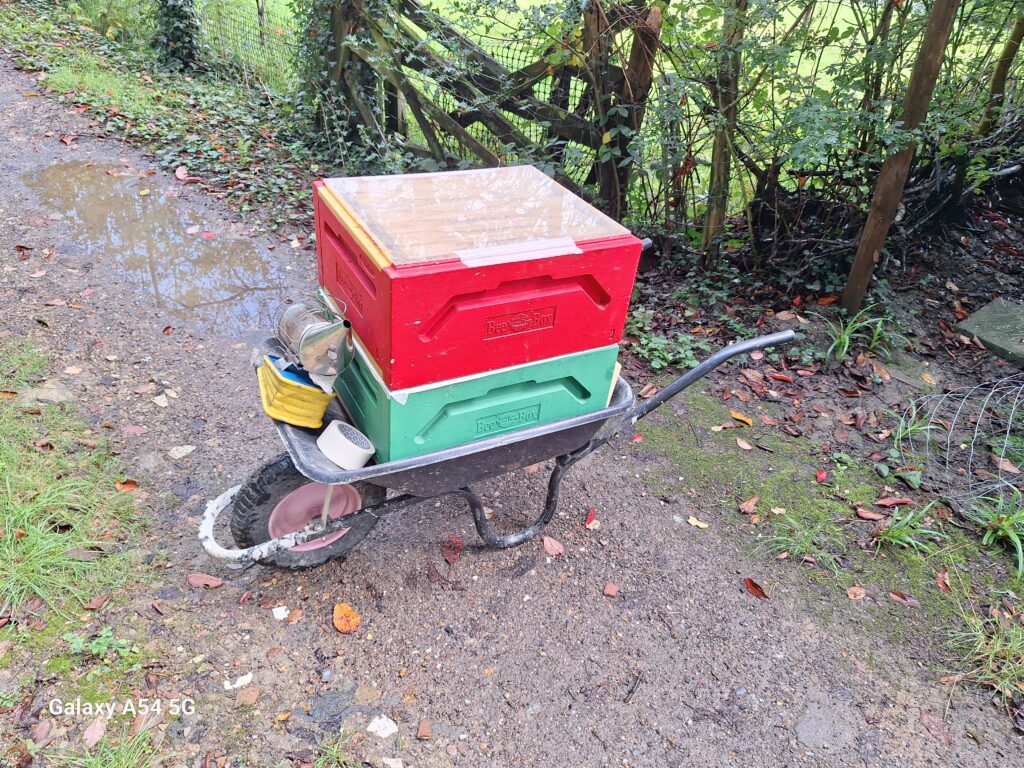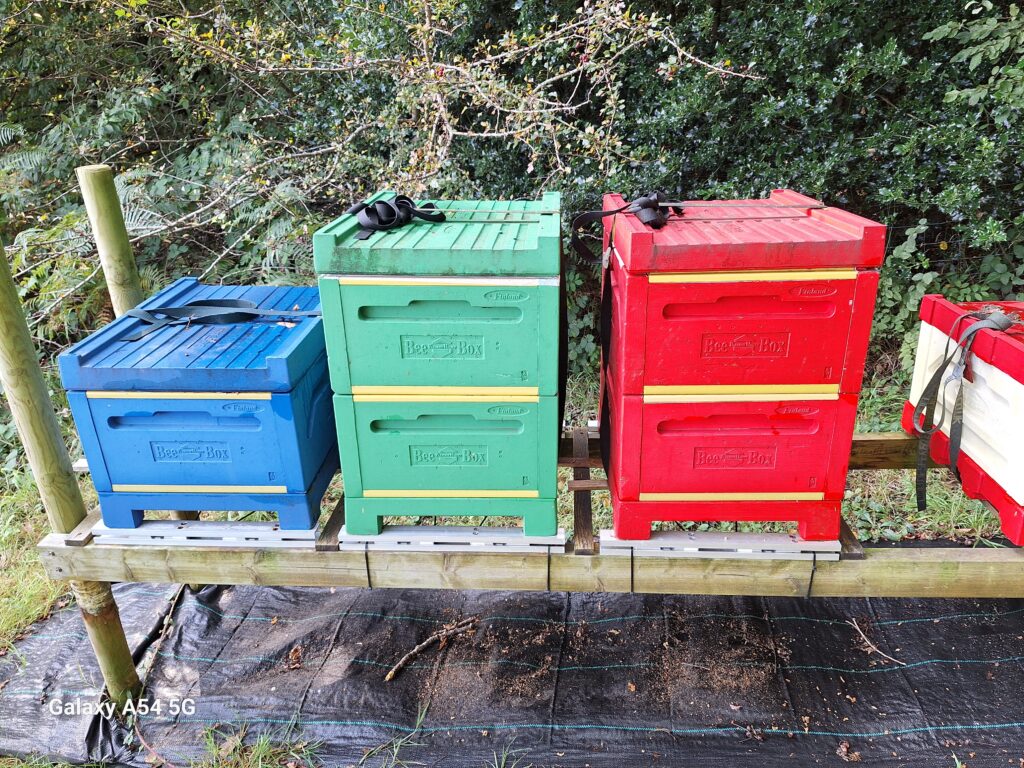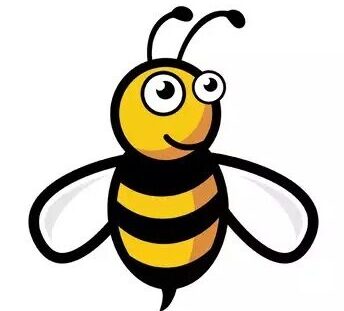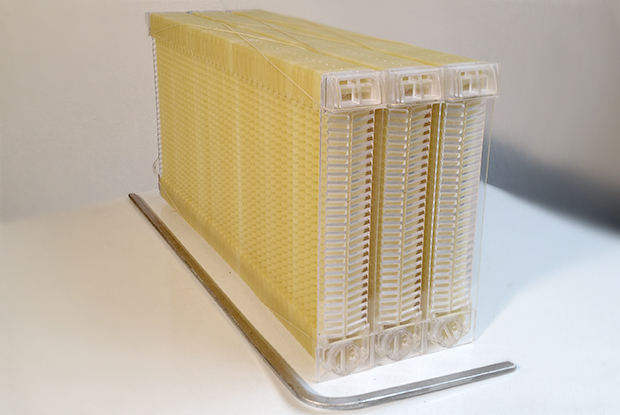Flow frames are great, but they are a pain to over winter. Luckily with low quantities of wax they don’t get wax moth larvae eating their way through them and destroying them however they do get a little mouldy. They are then a pain to clean before deployment in the spring. A steam cleaner is great see blog.
Normally I would stack my Flow frames in their supers in a cool dry place with plenty of ventilation so that they can wait out the winter. I would then clean them and get rid of any spiders before installing them back on the hives in May, June time.
Leaving the flows on the hive for winter
I’ve recently been playing with the idea following some comments online of leaving the frames on the hive over winter and without a queen excluder.

Never leave a queen excluder on a hive over winter. If you do and the bees move up through the QE, the queen will be isolated in the lower box and die as she will be trapped away form the nurse bees and the food.
Potential Advantages:
- It cuts down on the feeding frenzy to do the initial clean. So normally I put the empty flow frames out in the garden in my open storage shed for a few days to allow the bees to clean them naturally. This returns any residual honey back to the beehives but does create a bit of a frenzy. It encourages the bees to mix forma all hives and has the addition of wasps coming in as well as hornets. I deliberately for this reason do this well away from the hives so as to not encourage robbing, but there is the potential to spread disease as all bees in the area. It would be better to return the frames to the same beehive that yielded them in the first place.
- Allows the bees to use them to store and over winter honey still coming into the hive.
- Allows the bees to clean and maintain them over winter keeping any mould away.
- Increases the size of the beehive in early spring. This should prevent swarming.
- Allows the bees to begin spring with a lot more room to lay and store honey earlier.
- This should aid in the acceptance of the flow frames. Having the queen walk over the flow frames and the flows being part of the hive long term will aid in the acceptance and speed up the use. I have noticed in the past that the initial bit of honey takes a long time to come onto the flow frames. It seems to me that the bees have a preference for old drawn come first then the flows and then finally the empty space for cut combe. Who knows. Maybe this year I will even get an early crop!!!
Potential Disadvantages.
- The larger volume could be harder to keep warm in the winter. I am however using poly hives so these should be warm in the winter. We pet pretty mild winters in the uk so this in unlikely to be too big a problem. Also the flow frames use up a lot of the volume, so there is not a huge air mass to warm up. i will put a sheet of plastic on the top of the flows the will better seal the lid in place and help with the insulation.
- The biggest concern is that without the queen excluder, the queen will come up into the flows and may choose to lay brood. This would leave us with spring brood in the flows instead of honey. This is mitigated by putting in a queen excluder at least 1 month before anything interesting is needed from the frames. I would intend to put the queen excluder on by June at the latest, taking great care to put the queen in the lower brood box.
- There is also a risk that the flow swill fill up with nasty ivy honey late in the season or rape seed honey early in the spring. Both of which are bad for the flow system as the honey is hard set. Many flow users will specifically avoid rape seed areas or put the flow on only after the rape seed has finished flowering. This is not too bad for me as I am not in a rape area and I would hope that the ivy honey from late in the season will be used by the bees for winter feed.

This year I will take 2 of my poly hives as these are the warmest during winter and return the frames to them. They have to be returned in the Active Fill position, rather than the Active Flow position. I’ll also put a 3 mm sheet of acrylic on to top under the lid to help seal the warmth inside the hive. .
I’ll inspect in May and see how they are getting on, with the intention of putting the queen excluders on in May so that any brood is hatched out before honey can be stored. I’ll need to make sure there is no brood when the honey is harvested so 1 month after putting on the QE, June, I will inspect and make sure that any dead brood is removed and cleaned ready for the honey in September 2 months later.


Should you wish the bees to clean the flow frames and not use them for further honey stores then leave them in the Active Flow position.


1 thought on “Over wintering flow frames.”